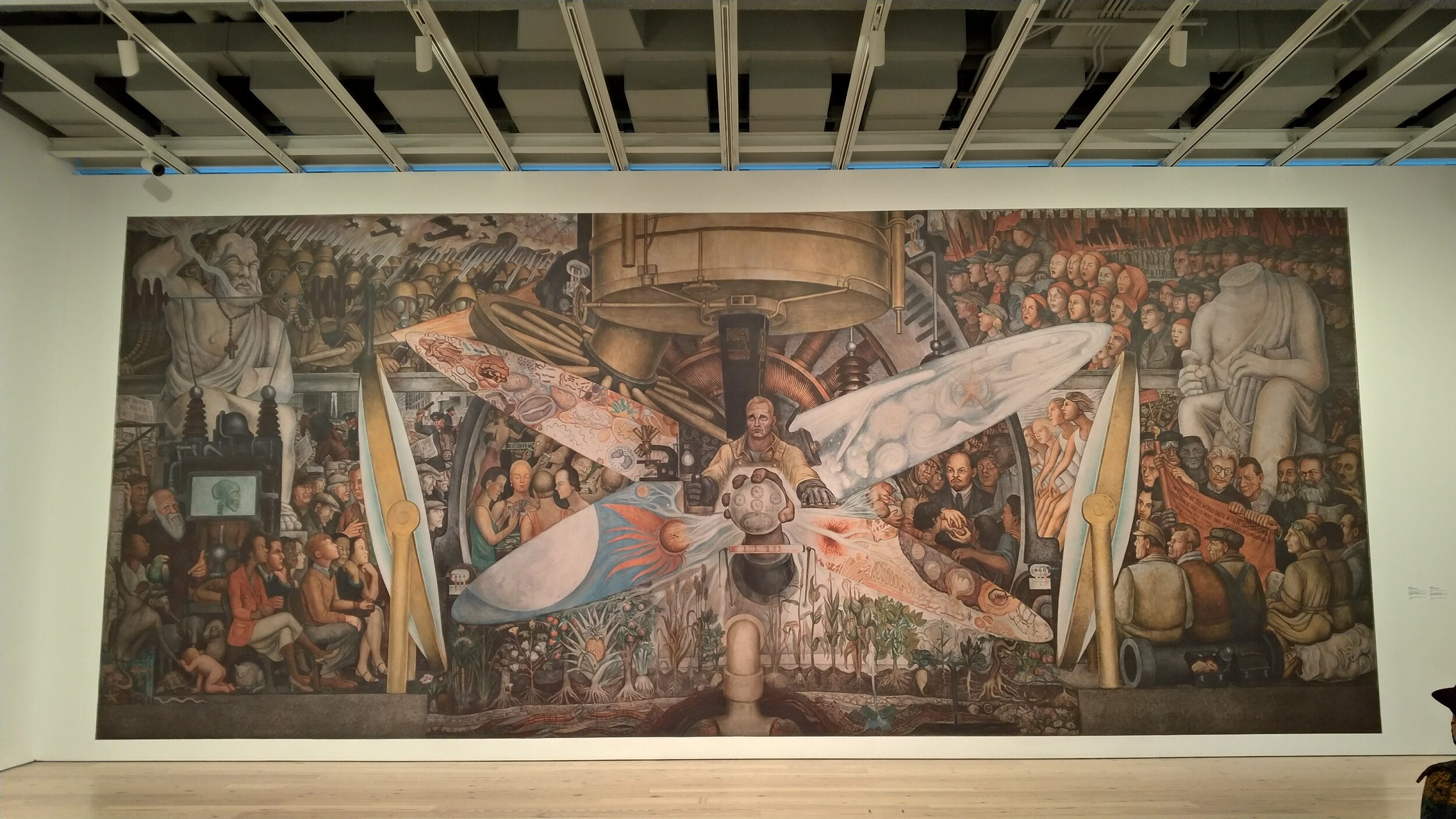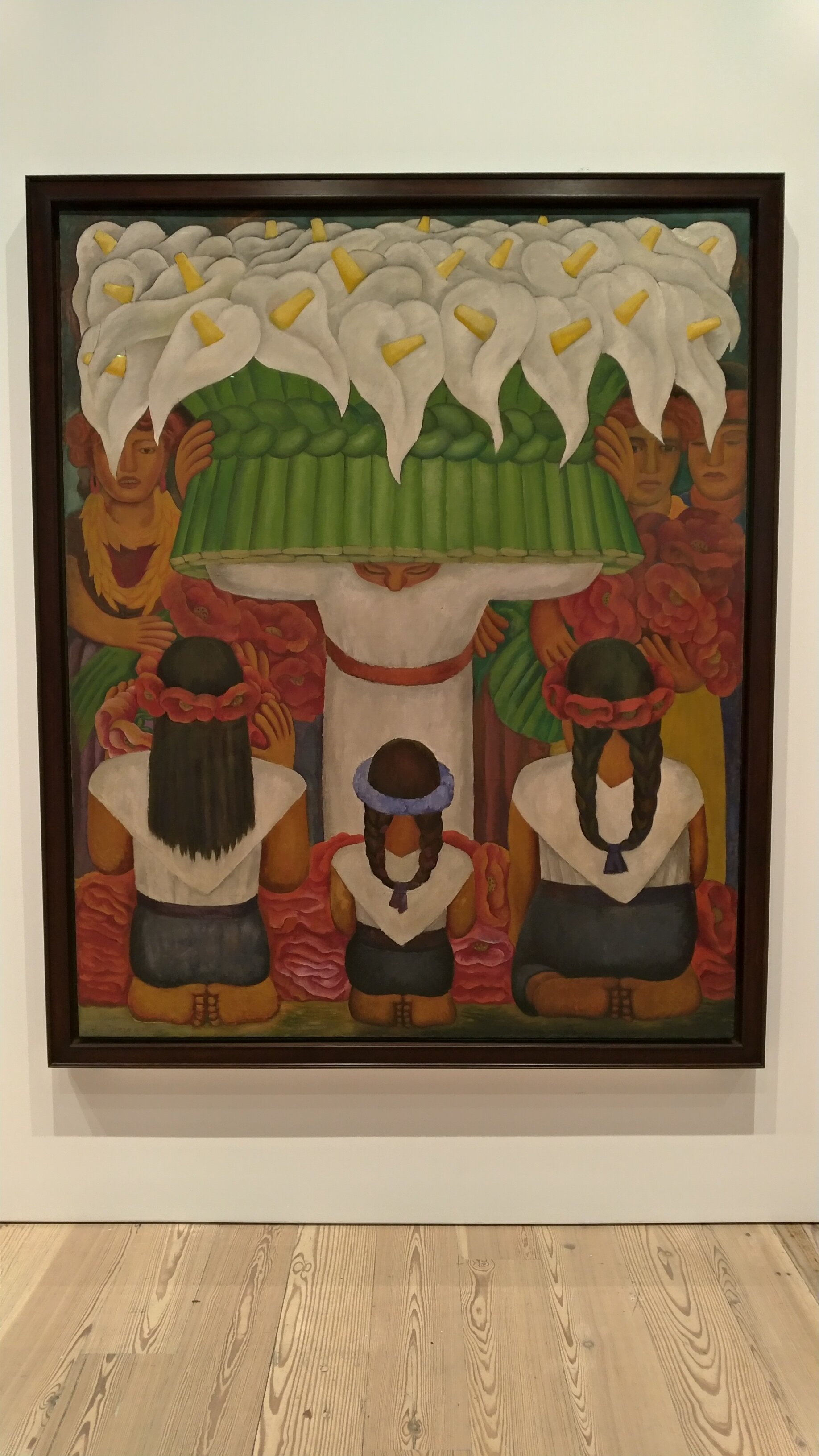Wandering through the exhibition “Vida Americana” at the Whitney Museum
You know Whitney Museum’s mission as the defining museum of twentieth- and twenty-first-century American art, as well as its belief in the value of history have both been accomplished, when you come home after seeing “Vida Americana: Mexican Muralists Remake American Art, 1925-1945” and you realize that what made the greatest impression on you was Lenin. (“Why are you so surprised?” asks your Russian –immigrant to the US for twenty years now- husband. “For a big part of its history, America has moved in a way parallel to Russia.”)
In this case, the connection with the Communist leader comes via Central America. After the end of the Mexican Revolution in 1920 the country’s national art went through a radical transformation and spoke directly to the Mexican people about its indigenous identity and social struggles. The American neighbors (artists and intellectuals) are stimulated and rush to take pictures of Mexico, write about Mexico, live in Mexico. Public monumental muralism is the aspect of Mexican Renaissance that most captivates Americans’ imagination, while the three leading muralists («los tres grandes») José Clemente Orozco, Diego Rivera and David Alfaro Siqueiros come to work on both the East and West coasts and in Detroit. (Here we are, exploring Mexican-American muralist art, while for the past few years we have been talking non-stop about the wall that should be built / is being built / should be demolished on the Mexico-United States border.)
It is hard for “Man at the Crossroads” not to catch your attention, and for Lenin’s portrait to go unnoticed amidst the multitude of figures and images included in this mural by Rivera. Intrigued, I approach (like many other visitors) to read the label: the piece was commissioned to the star painter (championed by Abby Aldrich Rockefeller, the founder of MoMA) by the Rockefeller Corporation in 1932, destined for its newly developed Rockefeller Center in the heart of Manhattan. The assignment was to portray “man at the crossroads, uncertain but hopeful for a better future.” The Russian Revolution leader’s portrait was not part of the sketches originally submitted. When Rivera added it, they asked him to remove it. The Mexican muralist refused to do so, and he was dismissed from the project. However, “Man at the Crossroads” was indeed completed and exhibited, not in the most famous American millionaire’s tower, but in Mexico City.
“Flower Festival: Feast of Santa Anita”, another work by Rivera, but of different scale and aesthetics, seduces with its clear lines, earthly palette and the symbolism exuded by the abstract female figures and the lilies. Right across, Frida Kahlo, with her cigarette in hand and with four green parrots sitting on her, fixes you and makes you stop in your tracks. Nearby, another Russian steals the show: in the excerpts projected from Eisenstein’s surreal, unfinished “¡Que viva México”, the ideal harmony and beauty of the peasants’ life and of their ancient traditions emerges dreamily.
The most fascinating element of a visit to Renzo Piano’s new Whitney (the museum opened at its current location in the trendy Meatpacking District in 2015) is the flow it provides between the indoors and the outdoors. I confess that, whenever I’m about to go to the Whitney, the thing I most look forward to is to find myself on its fantastic balconies, which span over four levels and offer almost 360º vistas to New York and New Jersey, and to the Hudson River. This constant possibility of choice between in and out does not simply help refresh your eye and brain between exhibits and exhibitions; it also fuels the experience of perceiving the content of the museum by reminding you of the context –the ever-evolving metropolis stretching literally around you.
As I continue to wander through “Vida Americana”, I have the impression that I’m traversing endless images of human beings fighting against each other in all possible variations of conflicts and struggles –civil, colonial, class. With the awareness of the social aspect of life exceptionally awakened (of course, when you live in Harlem, it is hard for this awareness to hibernate anyway) I step one last time out onto “the veranda” to take in the superb panoramic view, and I'm taken with the city's irresistible magic-hour charm (the early evening is so mild, you can’t believe it’s mid-January). Still in love with NYC (I’m neither the first, nor the last), I continue to try to solve the riddle of the city, the country, the continent, and apparently I’m at the right place, since it was exactly in this museum that, a few years back, the exhibition with the very eloquent title “America Is Hard to See” was presented.
As I descend towards the exit, I “run into” Gertrude Vanderbilt Whitney, posing semi-reclined but serious, looking at us, visitors to this unique home for American art that she –an arts patron but also an artist in her own right- created in 1932. I’ve seen that portrait before, but tonight Mrs. Whitney, a possessor not only of a great fortune but also of a strong vision, seems to me more radiant than ever. And rightfully so, since her groundbreaking choice to offer shelter to the artists of her country and of her time manages today to explore the definition as well as the evolution of American identity.
This essay first appeared in Greek in the TA NEA newspaper (in print and online) on January 30, 2021.
It was reproduced by HellasJournal.com on February 23, 2021.
Το κείμενο αυτό πρωτοδημοσιεύτηκε στην εφημερίδα ΤΑ ΝΕΑ (έντυπη και ηλεκτρονική έκδοση) στις 30 Ιανουαρίου 2021.
Αναδημοσιεύτηκε από το HellasJournal.com στις 23 Φεβρουαρίου 2021.
Για να διαβάσετε το ελληνικό κείμενο, κάντε κλικ εδώ.







